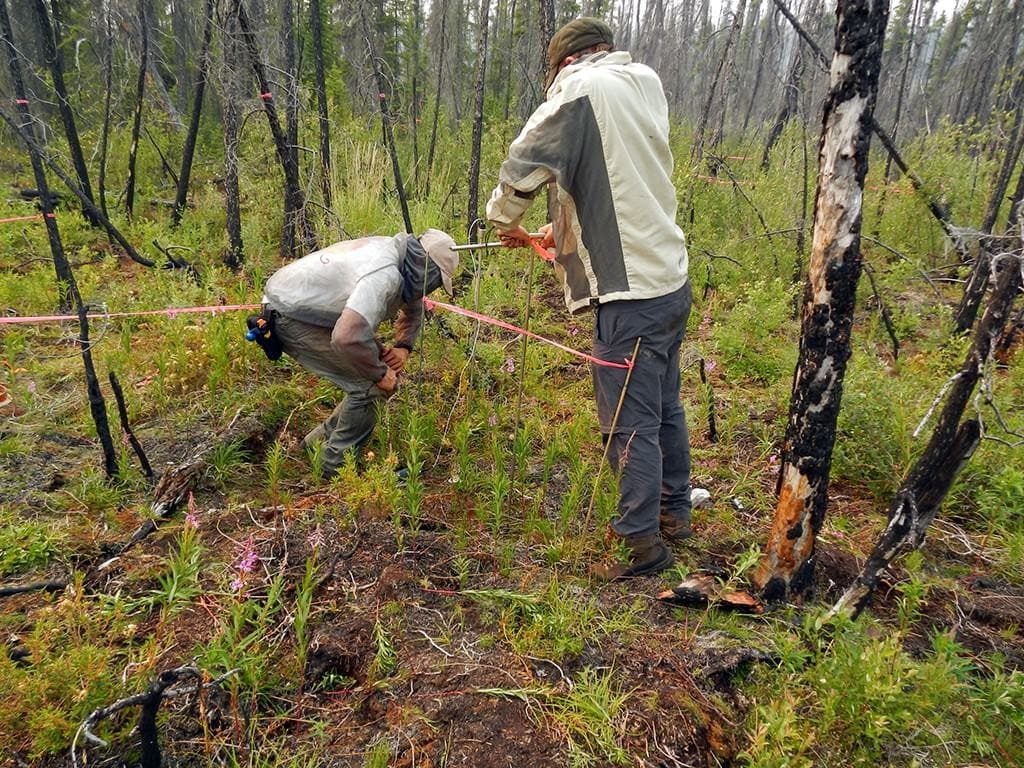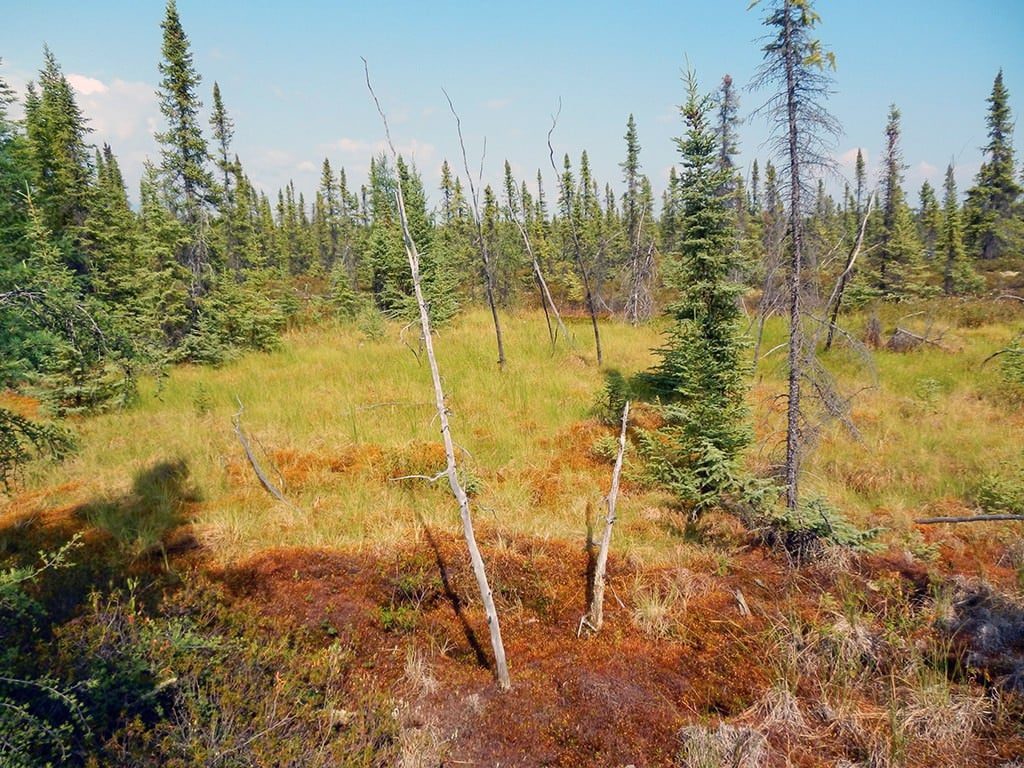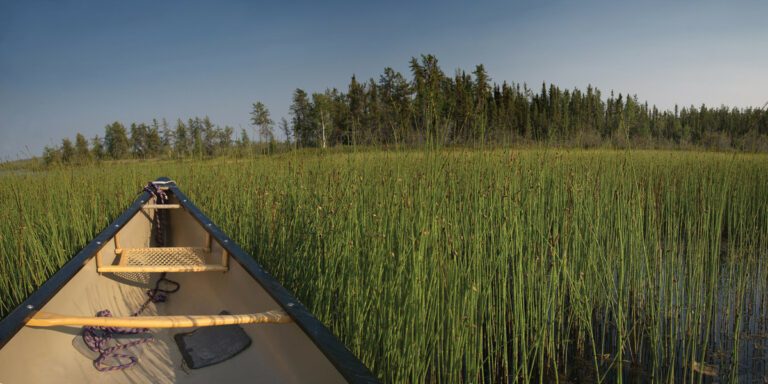Bumps caused by permafrost thaw and subsidence beneath a former section of the Ingraham Trail near Yellowknife | photos Julian Murton
by Julian Murton and Stephen Wolfe
With climate warming, changing vegetation, and recurrent forest fires, permafrost in many arctic regions has been warming or thawing, and these trends are likely to continue. The question is: what impacts result on the natural and built environment around Yellowknife? This summer, a team of UK and Canadian scientists has been investigating the frozen foundations of the Northwest Territories.
Permafrost is ground that remains at or below 0 C for two years or more. A dynamic expression of climate, permafrost ranges in thickness from a few centimetres to about 1,500 metres, and in temperature from 0 C to about ‒20 C. Permafrost is important to Canada’s environment and economy, as about half of the country is located in permafrost regions.
In Yellowknife, where annual air temperature is about ‒4.6 C, and winter temperatures frequently drop to below ‒40 C, permafrost is a part of life. The climate is cold enough to maintain permafrost beneath many areas of spruce and hardwood forest and peatlands, but permafrost tends to be absent beneath bedrock outcrops, fens and bogs. As a result, permafrost in and around Yellowknife has a patchy and variable distribution, with abrupt changes from frozen to unfrozen ground.
Some impacts of permafrost thaw are well understood. For example, melting of ice within permafrost often leads to gradual settling of the ground surface and formation of bumps and ruts in roads. Near Yellowknife, there is a lot of ice in silty sediments deposited by a vast Ice-Age lake known as glacial Lake McConnell. The lake sediments filled in hollows and basins in the bedrock, and after Lake McConnell drained, creating the present-day Great Bear, Great Slave and Athabasca lakes, permafrost developed in the sediments and made them ice-rich. If this ice melts, the ground surface will settle, which can happen if the top of permafrost warms because the vegetation is disturbed or removed, or the surface darkened with tarmac. Because of local permafrost thaw, many stretches along Yellowknife roads have had to be repeatedly re-graded to fill in low spots, and really problematic sections have been realigned to make best use of the ice-free outcrops of bedrock.
In addition to ice, permafrost in the northern hemisphere contains a lot of carbon, about twice as much as the atmosphere. However, unlike icy permafrost, the impacts of thawing carbon-rich permafrost are poorly understood, particularly in terms of carbon stocks, transfers and links to climate. On the one hand, if the permafrost thaws, the frozen carbon may start to decompose and produce more greenhouse gases (carbon dioxide and methane), which may accelerate climate warming. Conversely, vegetation generally absorbs carbon from the atmosphere, and a warming Arctic is predicted to support more plant life, which could offset rising carbon emissions. So what will actually happen to greenhouse gas transfers as permafrost warms and vegetation changes?

Measuring soil temperature and thaw depth in a burnt area of forest.
To investigate this question, a team of UK and Canadian scientists worked near Yellowknife this past summer to measure the impacts of permafrost thaw and fire on carbon stocks and greenhouse gas emissions in the boreal forest. Their project is called Carbon Cycling Linkages of Permafrost Systems (CYCLOPS), part of the Arctic Research Programme of the UK Natural Environmental Research Council.
The CYCLOPS team measured the extent to which different plant communities in the boreal forest insulate their soil and protect the permafrost from thawing. Some of these plant communities are also prone to burning, which accelerates thawing considerably, so the team also examined resilience to and recovery from fire, which may play an important role in preserving permafrost. Soil moisture is another important factor that was explored, as well-drained ecosystems such as forests or tundra respond differently to permafrost thaw than peatlands, which tend to have poor drainage. In order to gain an understanding of the interactions between carbon, vegetation, soil and permafrost, and the consequences for feedback to climate across all of these plant communities, carbon budgets and the release of methane and carbon dioxide from the soil were measured in detail, along with plant and soil characteristics.
Analysis of, and experimentation with, the wealth of data from these different ecosystems in different stages of their life cycle also allows CYCLOPS to develop more detailed computer models of vegetation-permafrost interactions and permafrost thaw. These models, which are critical to better understanding climate change, are used to predict how greenhouse gas transfers will vary as permafrost warms and vegetation changes. So now with the field season over, it’s back to the lab!
Julian Murton is a professor at the University of Sussex (UK) and Stephen Wolfe is a research scientist with Natural Resources Canada. Other CYCLOPS members are from the universities of Edinburgh, Sheffield and Exeter, and partners in the Northwest Territories Geoscience Office (Yellowknife), Carleton University and the University of Ottawa.

Dead trees within a permafrost thaw basin in a spruce forest.






